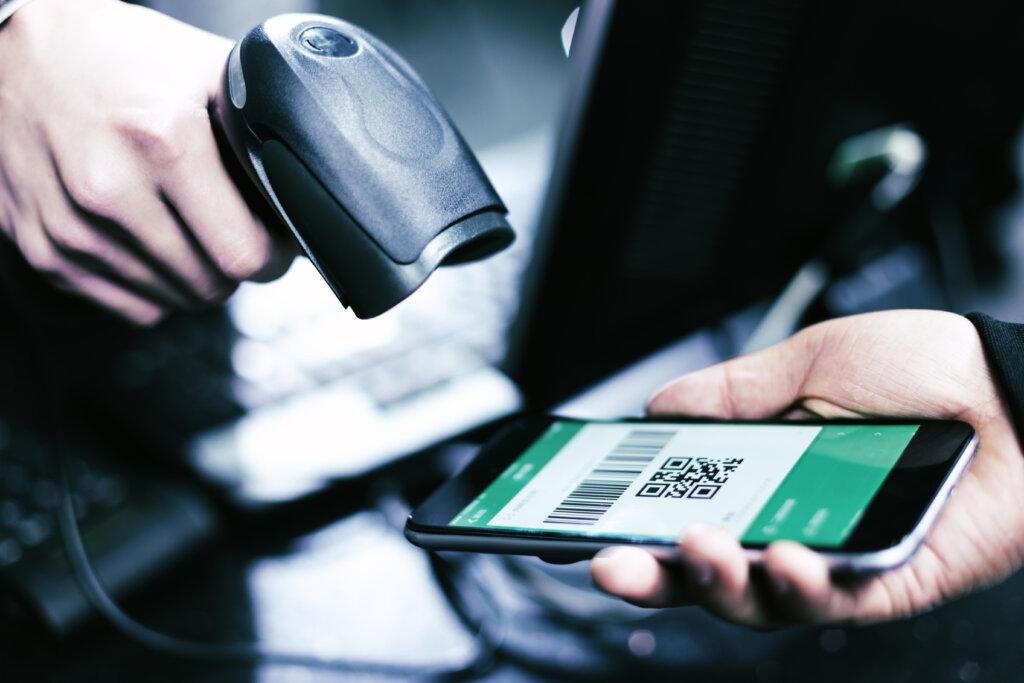
China is the world’s largest cashless economy. (Image – Shutterstock)
Can Australia become a cashless economy?
|
Getting your Trinity Audio player ready... |
- China leads cashless transactions globally.
- Australia is seeing increasing cashless transactions, but many still prefer using cash.
A cashless economy happens when the use of physical cash for transactions is non-existent. Instead, a cashless economy requires all transactions to be completed through electronic channels. This includes transactions via direct debit, credit cards, debit cards, e-wallets, QR codes and a variety of other virtual payment methods.
Over the years, more countries have focused on moving towards a cashless economy, with the hopes of eliminating problems like counterfeit money topping one of the reasons. Some of the earliest adopters of a cashless economy in the Asia Pacific include China, India and Singapore.
In fact, China’s cashless transactions are one of the biggest in the world. The country is already home to the largest mobile payment market, with 86% usage in 2021. Some of the most common cashless platforms in China include WeChat Pay and AliPay.
Meanwhile in India, the government’s demonetization initiative kickstarted in 2016, paving the way for a cashless economy in the subcontinent. The Indian government also launched the Unified Payment Interfaces (UPI), an instant payment system developed by the National Payments Corporation of India as well as pushed for the development of e-payment startups.
Singapore and Malaysia have also launched numerous initiatives to become a cashless economy. Singapore’s adoption rate of cashless payments is the highest in Southeast Asia at 97%, based on payment methods at Singapore retail points-of-sale in 2022. Malaysia is the second leading country in Southeast Asia with the highest rate of cashless payments adoption.

QR codes is one of the many cashless payment methods. (Image – Shutterstock)
The Australian cashless economy
Interestingly, while the rest of the world has been embracing cashless transactions and payments, the scenario is rather different in Australia. According to FIS Global, the value of cash payments in Australia represented just 6% of all point-of-sale transactions in 2022.
However, some Australians are still insisting on using cash. In a report by 7news, Australians are ditching their debit cards in protest against an increasingly cashless society. The report states that the protestors will only pay with coins or notes for their purchases. Some are even vowing to forfeit their purchases if denied the opportunity to use cash.
To promote a cashless economy, the big four banks in Australia have also started changing their operations in banks towards cashless transactions. A report by The Daily Mail highlighted how three of Australia’s big four banks were switching some of their branches to cashless. The National Australia Bank and Commonwealth Bank are now referring to their cashless locations as “expert centers” and “specialist centers” respectively. ANZ unofficially calls their cashless outlets “digital branches.”
Customers who go to these banks to withdraw and deposit cash will be directed to ATMs. Unfortunately, the move has not gone down well for some Australians. Withdrawal figures from the Reserve Bank of Australia (RBA) in April 2033 show the usage of cash is still ongoing.
The reality is though, most countries are moving towards cashless economies. Whether society approves of it or not, they may end up having to deposit all their cash to do their transactions in the future.

A Tweet on Australia moving towards a cashless economy.
Benefits of a cashless economy
While there are some concerns about going cashless, such as cybersecurity concerns and systems going offline, most countries around the world and taking steps to ensure the infrastructure used is well-secured. Banks and other financial service providers that are offering cashless transactions are also taking initiatives to ensure their products remain available all the time and consumers will not be caught in any payment issues.
Some reasons why countries are moving toward a cashless economy:
- Convenience: Cashless payments are generally much more convenient than using cash. Fintech innovations have also enabled cross-border cashless payments at much better exchange rates as compared to using cash.
- Lower Crime Rates: Carrying a lot of cash around does come with security concerns.Going cashless would mean there would be no tangible money to steal, reducing crime. If a device is stolen, the bank or service provider can be immediately notified.
- Security features: Some users are concerned about payment scams or being charged without their authorization. Almost all payment apps and devices today come with multi-factor authentication, which includes biometric verification as well, to ensure a safe transaction.
- Decreased Money Laundering: It is harder for people to launder money without cash as it is much easier to track electronic payments and spending with digital paper trails.
- Time: A lot of time will be saved from not managing cash for both businesses and consumers. Business owners will also not have to worry about having too much cash stored at their premises.
READ MORE
- Safer Automation: How Sophic and Firmus Succeeded in Malaysia with MDEC’s Support
- Privilege granted, not gained: Intelligent authorization for enhanced infrastructure productivity
- Low-Code produces the Proof-of-Possibilities
- New Wearables Enable Staff to Work Faster and Safer
- Experts weigh in on Oracle’s departure from adland


